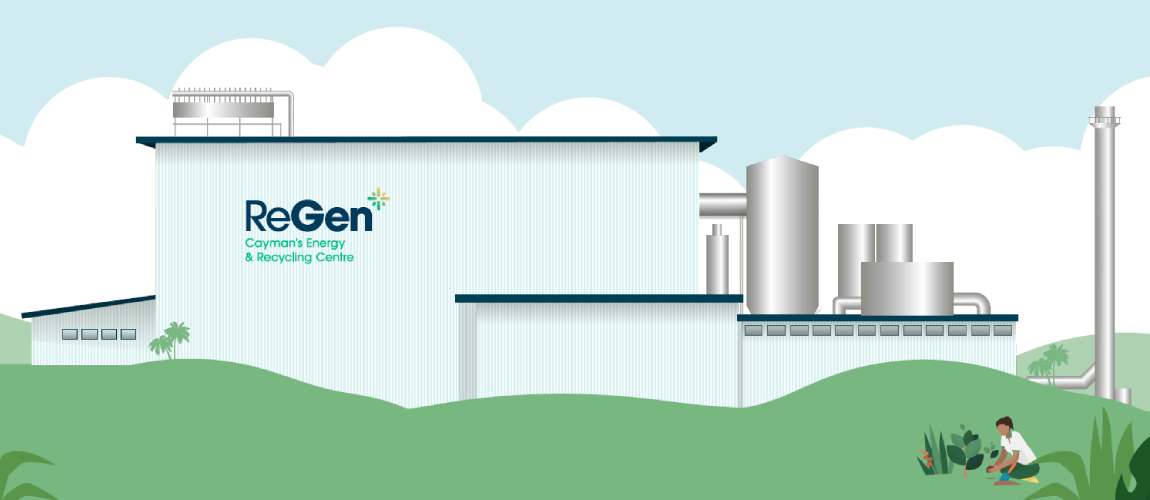
The mainstay of the nine, planned facilities that will form ReGen, Cayman’s Energy & Recycling Centre, is an energy recovery facility that will turn waste into electricity to power the country’s homes and businesses.
The energy recovery facility will generate sustainable power from trash by combusting materials that aren’t recycled at very high temperatures. The heat is then used to produce high pressure steam that will be harnessed to drive a turbine that will run an electrical generator.
After combustion, any leftover metals will be removed from the bottom ash for recycling overseas. The bottom ash itself will also be recycled as aggregate or fill for roadway and other construction projects.
State-of-the-art technology will scrub emissions to European Union Industrial Emissions Directive standards, considered the highest globally. The emissions residue, known as fly ash, will be stabilised in a cement mixture and disposed in a new, fully lined, residual waste landfill.
Power to customers
Power generated from the energy recovery facility will be supplied to the Grand Cayman electrical grid through a purchase agreement with Caribbean Utilities Company, better known as CUC.
CUC has committed to accepting the power generated from the facility and a pricing agreement between ReGen and CUC is in the final stages of negotiations.
Approximately one megawatt of the power generated from the facility will be used to run the plant itself, leaving a net output of just over nine megawatts.
Although the energy recovery facility is not expected to drastically lower current electricity bills, by avoiding diesel power generation for approximately 9% of Grand Cayman’s total electricity use, ReGen will help stabilise the fuel cost that makes up part of CUC’s billing charges to customers.
Reduced greenhouse gas emissions
ReGen supports the reduction of greenhouse gases by avoiding the use of fossil fuel generators to produce the same amount of power. In addition to recovering energy from waste, the energy recovery facility will also utilise landfill gas collected from the remediated George Town Landfill.
Because any organic waste processed through the energy recovery facility would produce greenhouse gas emissions through the natural biodegradation process, the United States Environmental Protection Agency considers energy from waste approximately 50% renewable.
Supporting renewable energy targets
The Cayman Islands National Energy Policy sets out to achieve a goal of 70% renewable energy by 2037. The nine megawatts produced by the ReGen energy recovery facility will account for approximately 3% of this target.
Currently, just 3% of Cayman’s energy is generated from renewable sources.
This article appears in print in the July 2021 edition of Camana Bay Times, written by Hannah Reid.
